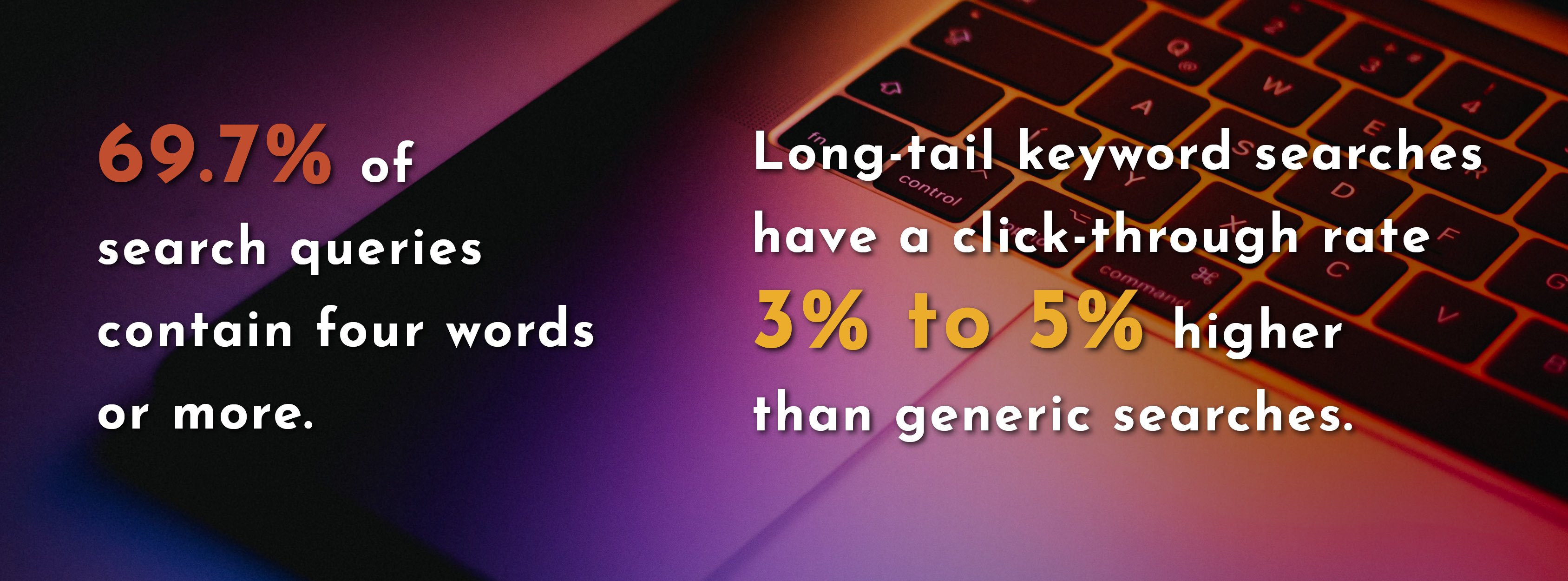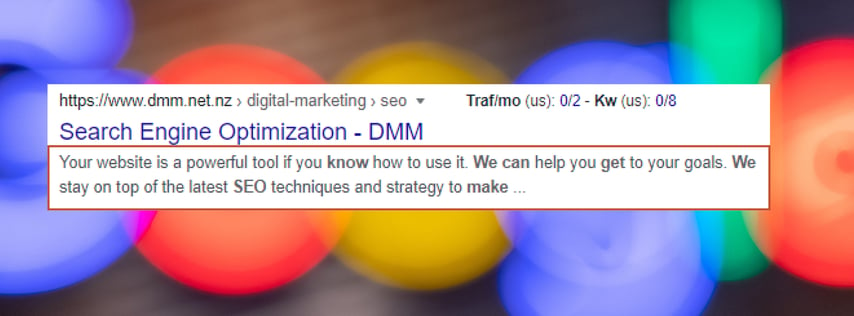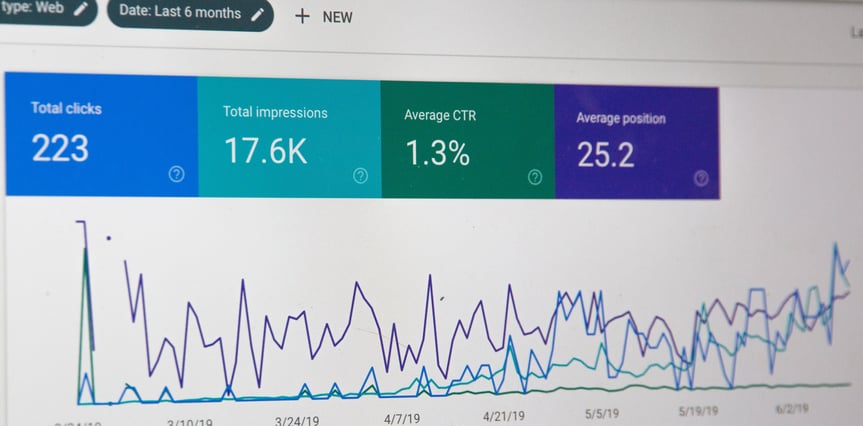We all know or have heard that a website needs to be optimized for search engines. Yet a lot of marketers, business owners and managers can’t quite explain why let alone how search engine optimization (SEO) works. If you’re thinking “It has something to do with Google” you’re on the right track.
Let us give you a brief overview of how SEO works, how you can implement it for your business’ success, and how you can track its progress.
In short: The better your website is optimized for search engines to read and rate it, the higher you will rank with your website’s content on Google’s search results page (SERP). The higher you end up on the SERP the higher your website traffic gets. Consequently, the more website traffic you get the more leads and sales you can generate.
Some stats to prove why ranking on Google is important:
Statistics show that 51% of website traffic globally comes from organic search results. The other 49% are from advertising, social media, referral sites and other sources. Between 71% and 92% of search traffic clicks come from the first page of Google search results. If you are not on the first page of Google, you aren’t getting the traffic. [Searchdecoder]
If you want more detailed information we have summarized 5 reasons to put some time and effort into your SEO Strategy.

Factors that influence your Google ranking
If you’ve dealt with SEO before you’ve heard the term keywords. They are still a very important part of improving your rankings, but SEO has evolved and includes more factors. Nowadays there is a whole list of actions that comply with a specific set of rules in order to rank higher. One of those components is quality content on your website. Google analyses if users will find what they are looking for on your page, so you need to organize your content and offer value.
A good way to combine keywords and good content is to do your research on the keywords you want to target first. Ask yourself what your target audience is searching for when your business, product or service is the solution.
Note: Keywords can be a combination of words. Most search queries contain an average of four words.
There are free tools, which can help you to find out if keywords are easier or trickier to rank for. They even suggest related keywords that can be better options to go past the competition. After you have a list of fitting keywords for your business with a high search volume but hopefully low SEO difficulty – meaning competition – you can turn them into content.
Make sure you write your content for an actual human. Implementing your keywords shouldn’t lead to you sounding like a robot. Avoid keyword stuffing too. Google can penalize you for playing dirty.
Another way to implement your keywords is through metadata. Include them – where it makes sense – into your image alt text and your meta description.
Image alt text:
Google can see images, so you can tell Google what an image looks like by adding descriptive alt text.
Meta description:
is the short prequel of a piece of content that you see on the results page under the headline and the website’s link. It is similar to the subject line of an email. Use it to give the reader a descriptive brief overview of what to expect and make it inviting.

The last tip when it comes to writing your content is: use H-tags properly.
H-tags:
Use the H1 tag ONLY ONCE for the main headline. Structure the rest of your headlines according to importance. Think about a content table or list while doing that. Google structures your content by your headlines. If you organize your content under headlines with the right h-tags it will be easier for Google to navigate through it and find the right information. If you are using headlines as a numbered list Google can also give the user the whole itinerary of your article in a featured snippet.
For example, you are writing a post about great hikes in New Zealand. You have your H1: The top X hikes in New Zealand.
And then you could structure your content as follows:
H2: X great walks on the North Island
H3: 1-3 hour walks
H4: Name of walk
H3: 3-6 hour walks
H4: Name of walk
H3: multiple day walks
H4: Name of walk
H2: X beautiful walks on the South Island
H3: 1-3 hour walks
H4: Name of walk
H3: 3-6 hour walks
H4: Name of walk
H3: multiple day walks
H4: Name of walk
Writing quality content for your target audience and the search engine is a crucial part of the search engine optimization process. And as beneficial as it can be, as time-consuming it can be too. Your content and keywords need to be continuously analyzed and updated. Other components that need to be considered to hit the sweet spot of SEO are technical optimization as well as on- & off-page optimization.
Benefits of the right SEO practices:

- Higher ranking in Google organic search results
- More website traffic
- More qualified leads into your sales funnel
- Improvement of your website’s user experience
- Improvement of your Google Ads Quality Score
- Less spending per Google Ad
- Opportunities for people to share your content on social media
- Bigger online footprint through external links
- Better tracking of your website results
- Ultimately improvement of your business’s profitability
Track how your SEO efforts are performing
The wonderful thing about SEO is that you can track the effects of your actions. Within the Google Analytics tool, you can set customized goals and conversions. This enables you to easily see your return on investment (ROI) for every dollar spent on search engine optimization. With the combined use of Google Analytics and Google Console, you can track how improvements on your website increase the traffic onto your website.
If your results don’t match your expectations, it can pay off to focus on your local SEO strategy. That will help you to target the right audience. Another tool to consider is Google Ads (previously AdWords) which is a pay-per-click advertising service from Google which will increase your reach.

We at DMM have been working with search engine optimization for over 12 years, and we have seen continuous changes in SEO. Google makes over 600 changes to their search algorithms per year. That is a lot! In order to stay on the first page of Google’s organic search results, it is necessary to continually work on your SEO on-page and off-page. With all the information available online it is possible to do successful SEO in-house. But staying on top of the latest developments in search algorithms, updating your content, and interpreting the reports correctly can be very time-consuming. There are pros and cons for both DIY and expert SEO.
Important is that you are aware that building authority on Google takes time. Improving your website and content isn’t going to land your website on Google’s first page overnight.
DMM is a trained and qualified Google Partner. That means we know about the latest developments, we know which actions to undertake on your website, and we know how to summarize the reports for you to understand and improve your website results.
Flick us a message today to discuss the possibilities to get your business onto the first Google search results page!






